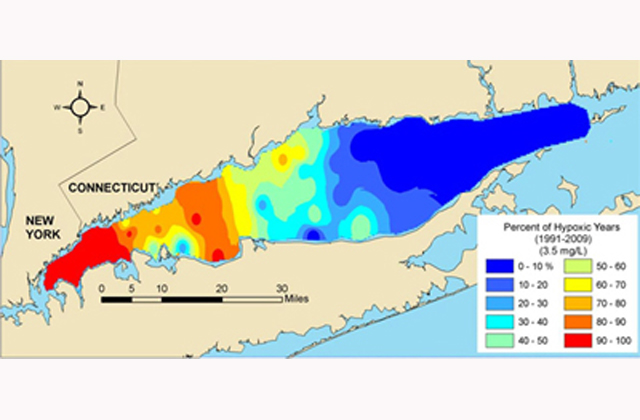Partnership Releases New Blueprint to Protect and Restore Long Island Sound (New York / Connecticut)
Stamford, CT (September 8, 2014)
[dropcap]T[/dropcap]he Long Island Sound Study, a partnership of federal, state, and local government agencies, as well as nonprofit and community groups and businesses, today released a new updated Comprehensive Conservation and Management Plan for restoring and protecting the Long Island Sound over the next two decades. The Long Island Sound and its watershed is a critical economic driver; it provides estimated annual economic goods and services of many tens of billions of dollars, which underscores the need for watersheds and wetlands to be protected and restored.
The draft Comprehensive Conservation and Management Plan Update reflects the changing needs of communities, incorporates scientific and technological advances, and addresses new environmental challenges, emphasizing the principles of sustainability, climate change resiliency, and environmental justice. The draft plan also sets 20 measureable targets for the ecosystem to be achieved by 2035, including reducing beach closures due to sewage, improving water clarity, reducing the area of waters with unhealthy oxygen levels, increasing shellfish harvests, and reducing the amount of marine debris.
“Building on the progress made to date, the challenge now is to make sustainability an integral part of achieving a cleaner, healthier Long Island Sound for people to enjoy,” said Curt Spalding, Regional Administrator of EPA’s New England office.
Super Storm Sandy
“Superstorm Sandy changed forever how we think about our coasts and coastal communities”, said Judith A. Enck, EPA Region 2 Administrator. “The draft plan highlights that actions can be taken to adapt to climate change, making Long Island Sound healthier and our communities and economy more resilient.”
The plan highlights progress made in the past 20 years to improve water and habitat quality.
Under an innovative, bi-state program to reduce nitrogen pollution there are now 35 million fewer pounds per year of nitrogen discharged from 106 wastewater treatment facilities to Long Island Sound.
More than a million gallons of recreational boat sewage are kept out of the water each year by the ‘No Discharge Zone’ for vessel waste in Long Island Sound established by CT and NY
Regional partners have restored a total of 1,548 acres of habitat and reopened 300 miles of river and stream corridors to fish passage since 1998. Since 2006, partners have protected 2,580 acres of open space and coastal habitat through easements and land acquisitions.
[information]
Public Meetings Planned September 16 & 17 in New York and Connecticut.
Contacts: John Martin, EPA Region 2, 212-637-3662 [Call: 212-637-3662] , martin.johnj@epa.gov
Emily Zimmerman, EPA Region 1, 617-918-1037 [Call: 617-918-1037] , zimmerman.emily@epa.gov
[/information]








